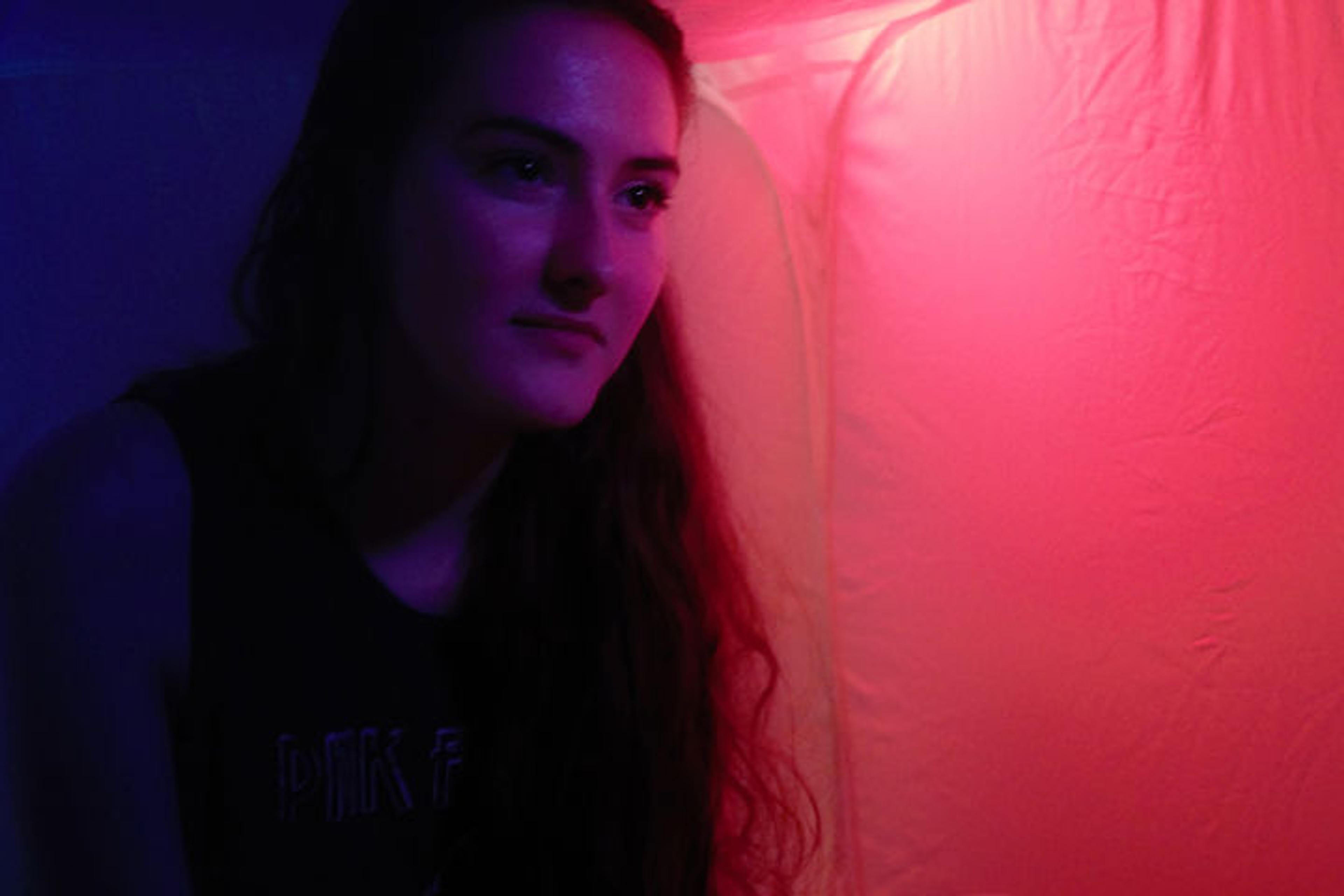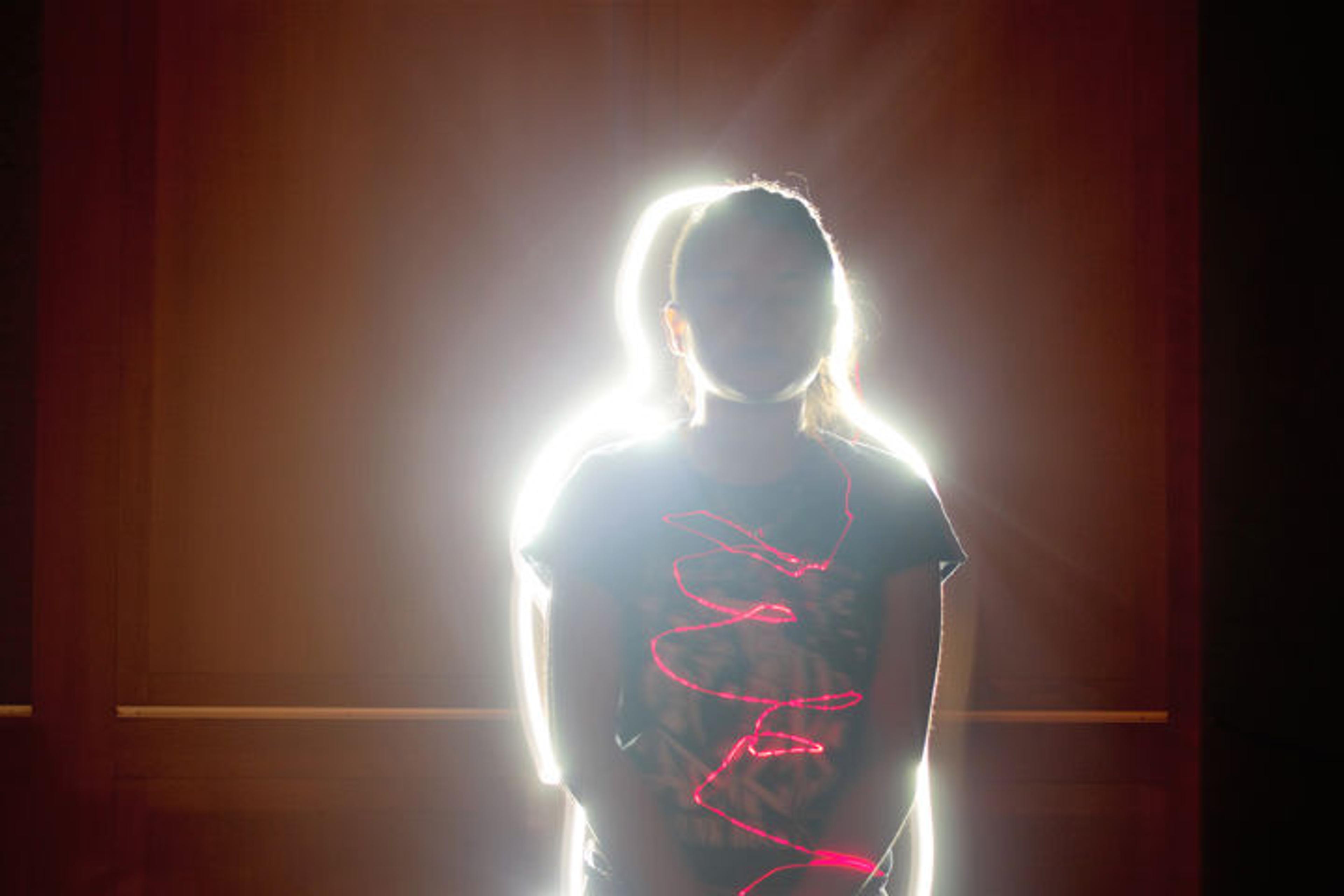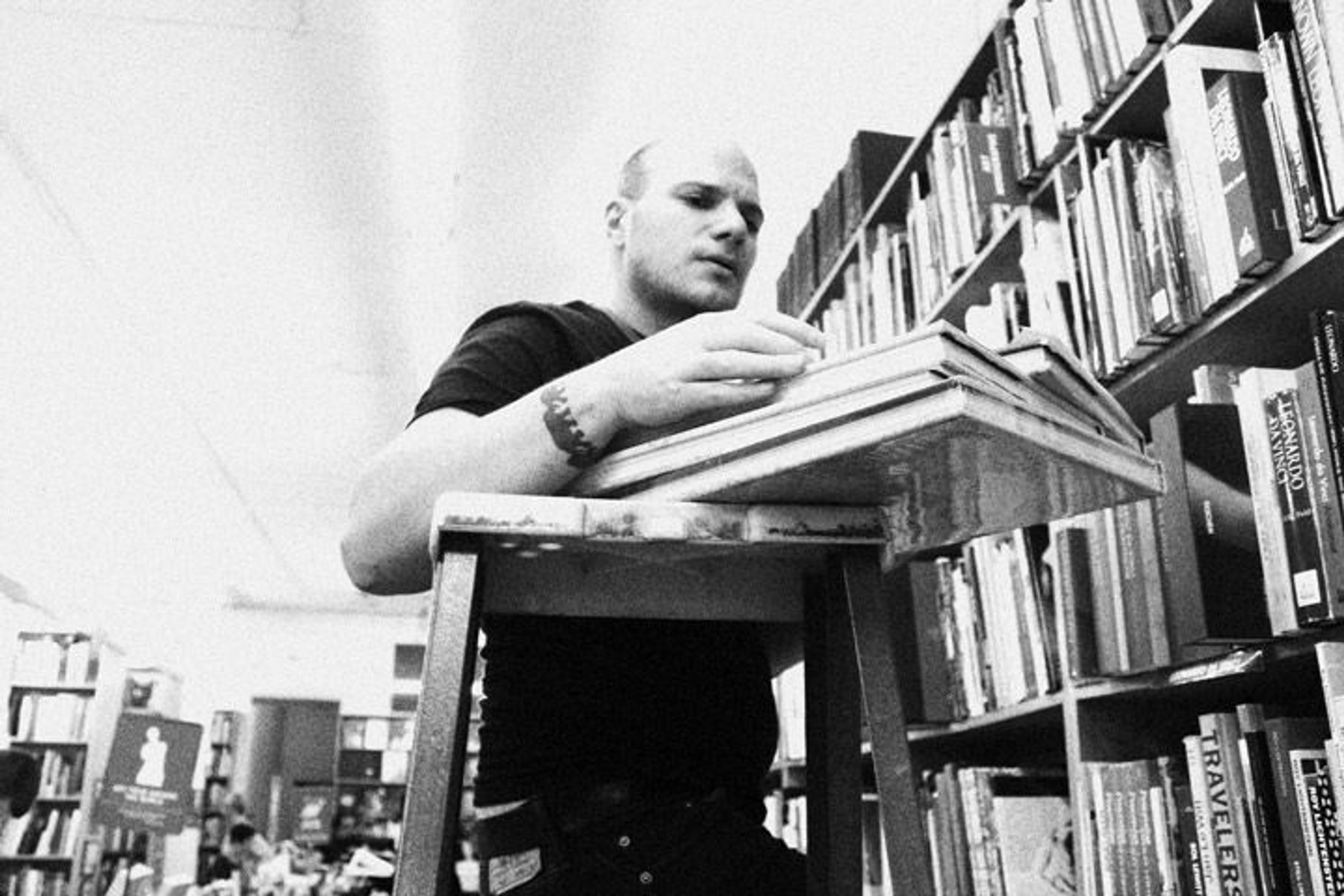
Halina S. Shoulders Aren't Just for Crying On, 2016
This Teen Blog post is part of the series #ArbusMetSquad, which showcases photography and writing by participants of the Summer 2016 Teen Studio—Photography program, who were inspired by the exhibition diane arbus: in the beginning.
«The most important rule when making a portrait is that there are no rules. You can pose subjects or capture them naturally. You can choose to alter lighting in a studio or use natural lighting. There are no rules, but each decision we make changes how the viewer perceives the photograph. We each took these elements into consideration when making these portraits of friends, family, and strangers.»
Shoulders Aren't Just for Crying On by Halina S.
My idea of a portrait is that it should portray a person without words. It should say something about the person's character. Most people think a portrait is a photograph of a person that only depicts them from head to shoulders. But a portrait can also be of your cat or your brother's feet on a skateboard. It should say something about the person you are photographing or the person you are creating with the camera.
In Shoulders Aren't Just for Crying On, shown above, you can see my brother holding a smiley face balloon over his face, which depicts him as I normally see him: happy and smiley. But the giant yellow balloon exaggerates this emotion and obscures the identity of the subject. This exaggerated expression captures my perception of him.
In the second portrait I created, my brother is holding our pet degus. What I like about this picture is that he usually is happy and smiley, as I mentioned before, but here he looks serious, with a slight smile on his face. It captures a side of him not often seen.

Halina S. Shoulders Aren't Just for Crying On, 2016
When making this portrait, it was raining, so I had to stay in. I built a set in my living room by moving furniture around and brought out a lamp. I asked my brother to pose for me, and he happened to be holding the degus.
Colors and Light by Kimberly S.
Portraiture is about expressing the concept of a person. Sometimes a portrait might be the absence of a person, focusing instead on their belongings or environment. No matter what the subject, the positioning, facial expressions, composition, and lighting are just a few things that will affect the outcome of the photograph. Slightly changing any of those things can drastically shift the mood of the photograph.
Colors expresses an in-between emotion in the use of both warm and cool colors combined with the subject's neutral expression. I created it by experimenting with gel filters to alter the lighting in the studio.

Kimberly S. Colors, 2016
In Light, the red color gives the photograph a warm tone, but the figure is outlined with light, so the viewer cannot see the expression on the subject's face. Since the subject's expression is unknown, the viewer is able to be creative in determining what the subject might be feeling or thinking.

Kimberly S. Light, 2016
Everyday People by Nicole G.

Nicole G. Everyday People, 2016
By looking at photographs, one becomes more aware of the people around them. Diane Arbus was my inspiration. Her images of people didn't have to be perfect. Her photographs weren't picture-perfect or of people smiling, and Child with a toy hand grenade in Central Park, N.Y.C. is an example of this. In the photograph, the boy's face looks distorted, and it really struck me. I thought, "pictures don't always have to look professional or clean." It's really in the eyes and the facial expression and what story the photo tells.
I photographed my guitar teacher as himself. I told him to act natural, and even if I caught him off guard, I felt the off-guard pictures were best. I think it's better when the subject is just being themselves without having to worry and not being stiff or posing.

Nicole G. Everyday People, 2016
The variety of Diane Arbus's work inspired me to look at people in a different way and to be open and reach outside of my comfort zone. I didn't expect to make such interesting photographs of everyday people, whether it was of family, teachers, friends, or strangers.
For a high school paper when she was 16, Diane Arbus wrote, "I see the divineness in ordinary things." She also saw the divineness in ordinary people, and so do we. For more inspiration, go visit diane arbus: in the beginning, on view through November 27 at The Met Breuer.